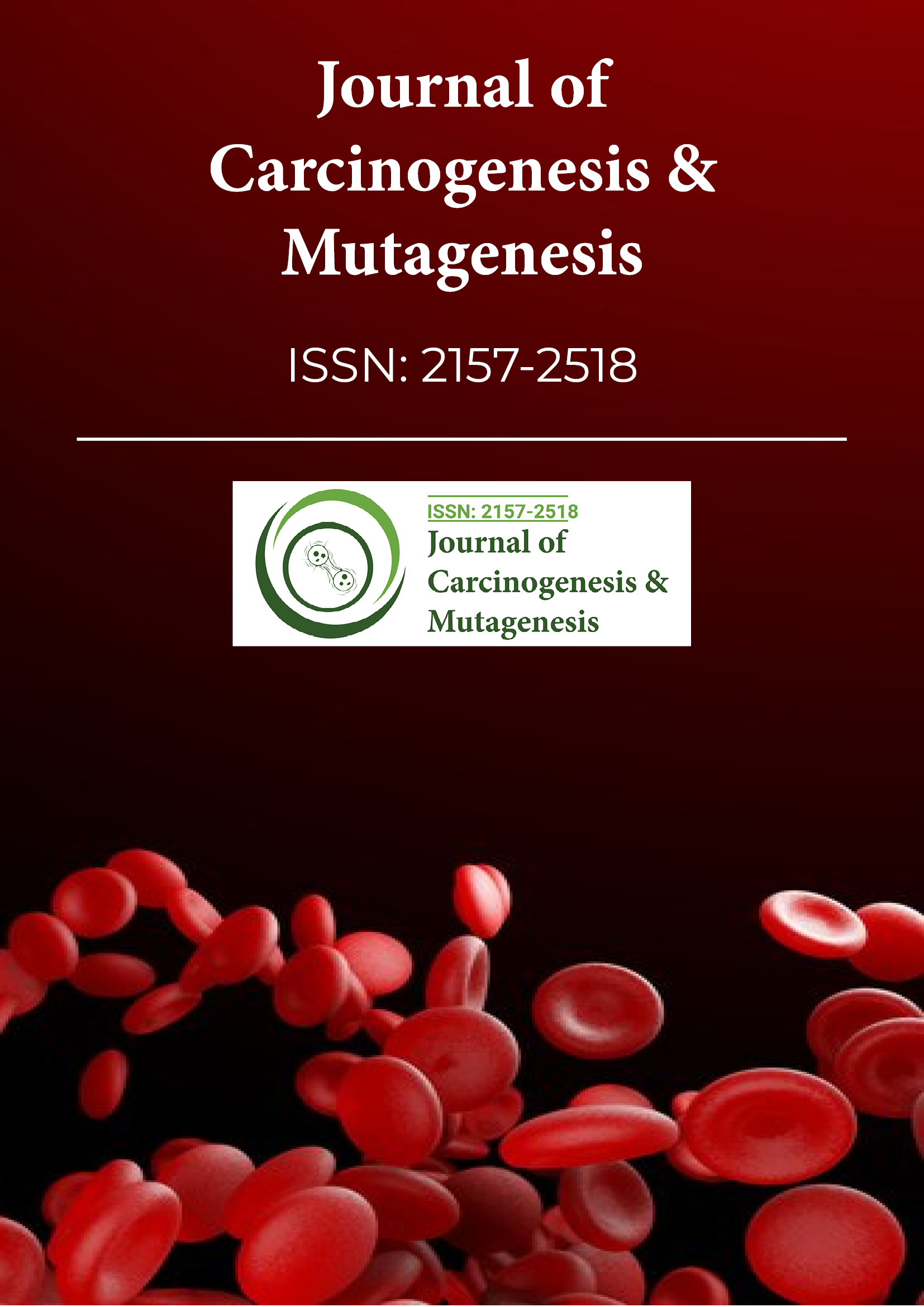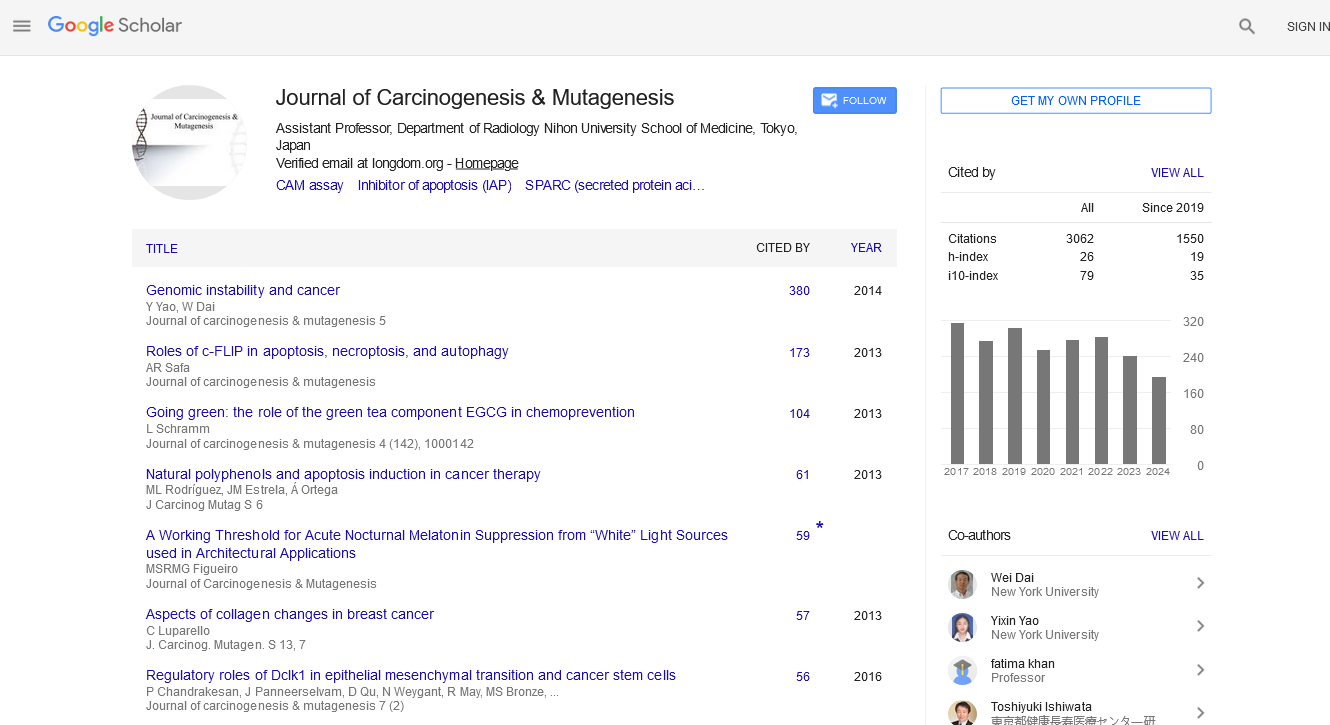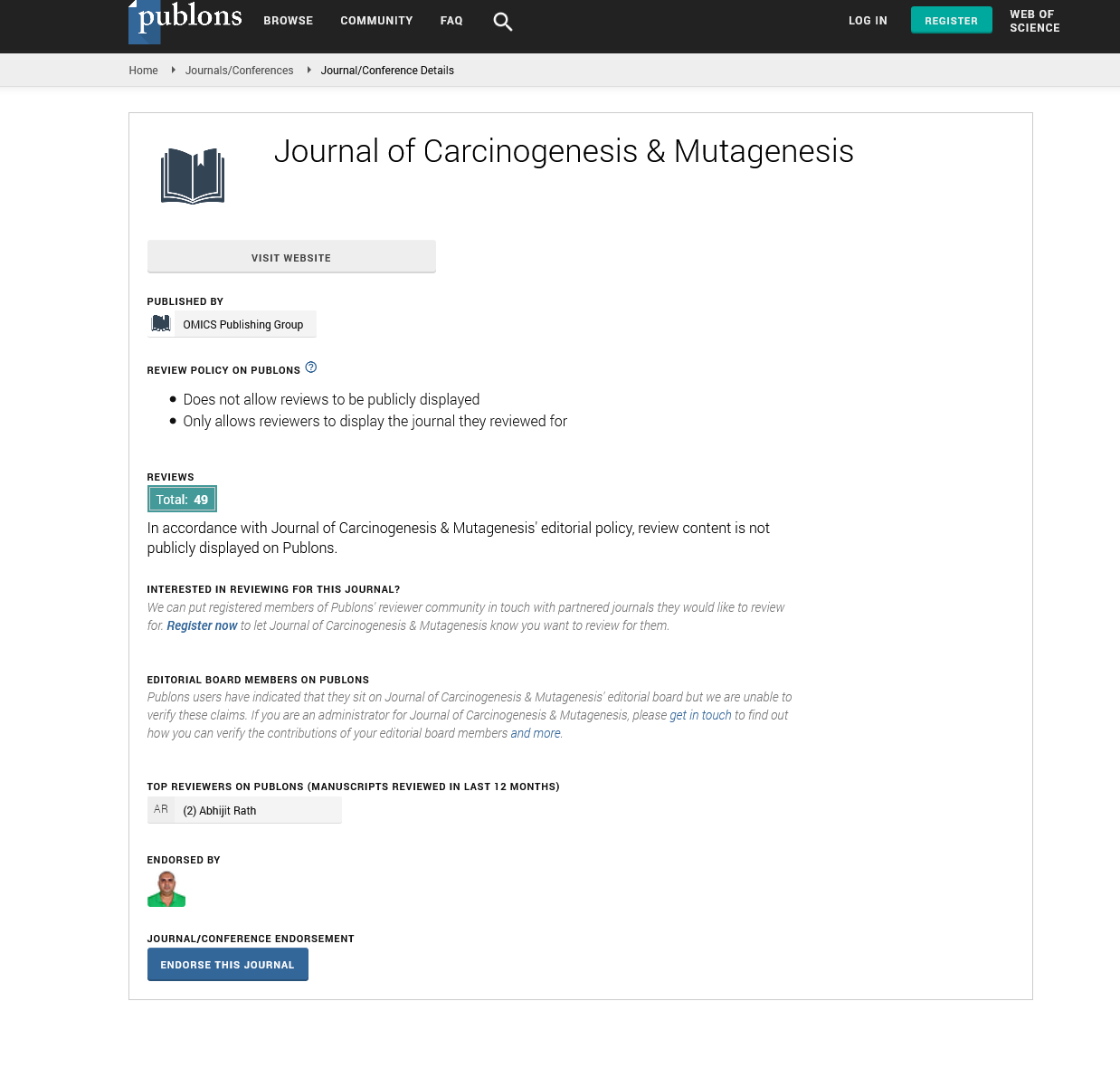Indexed In
- Open J Gate
- Genamics JournalSeek
- JournalTOCs
- Ulrich's Periodicals Directory
- RefSeek
- Hamdard University
- EBSCO A-Z
- OCLC- WorldCat
- Publons
- Geneva Foundation for Medical Education and Research
- Euro Pub
- Google Scholar
Useful Links
Share This Page
Journal Flyer

Open Access Journals
- Agri and Aquaculture
- Biochemistry
- Bioinformatics & Systems Biology
- Business & Management
- Chemistry
- Clinical Sciences
- Engineering
- Food & Nutrition
- General Science
- Genetics & Molecular Biology
- Immunology & Microbiology
- Medical Sciences
- Neuroscience & Psychology
- Nursing & Health Care
- Pharmaceutical Sciences
Perspective - (2025) Volume 0, Issue 0
Genotoxicity as a Predictor of Carcinogenic Potential in Chemical and Pharmaceutical Substances
Dominic Kemps*Received: 01-Apr-2025, Manuscript No. JCM-25-29009; Editor assigned: 03-Apr-2025, Pre QC No. JCM-25-29009 (PQ); Reviewed: 17-Apr-2025, QC No. JCM-25-29009; Revised: 24-Apr-2025, Manuscript No. JCM-25-29009 (R); Published: 30-Apr-2025, DOI: 10.35248/2157-2518.25.16.005
Description
Genotoxicity refers to the ability of certain substances to damage the genetic material within a cell, which can lead to mutations, cancer, and other health disorders. This damage may affect the DNA directly or interfere with the cellular processes responsible for its maintenance and replication. Understanding genotoxicity is important in fields such as toxicology, pharmacology, environmental science, and public health because it helps identify harmful agents and prevent potential long-term health effects.
Genotoxic agents work by different mechanisms. They may directly interact with DNA, forming adducts that distort the DNA helix and obstruct normal biological functions. Some agents cause breaks in DNA strands—either single or double—which can disrupt gene function or lead to chromosomal fragmentation. Others interfere with the mitotic process, leading to incorrect chromosome distribution during cell division. Additionally, genotoxic compounds can inhibit or alter DNA replication and repair mechanisms, resulting in misrepair and accumulation of mutations over time.
These agents come from a wide range of sources. Naturally occurring genotoxins include mycotoxins like aflatoxin B1, produced by certain fungi, and compounds found in tobacco smoke. Environmental pollutants such as heavy metals (arsenic, cadmium), pesticides, and industrial by-products also possess genotoxic properties. Some pharmaceutical drugs, especially chemotherapy agents, are intentionally genotoxic as part of their mechanism to kill rapidly dividing cancer cells. Radiation—both ionizing, like X-rays and gamma rays, and non-ionizing, like ultraviolet light—is also a well-known genotoxic factor.
The health implications of genotoxic exposure are significant. Genotoxic damage that escapes cellular repair mechanisms may lead to the activation of oncogenes or the inactivation of tumor suppressor genes, triggering uncontrolled cell division and cancer. Additionally, if the genetic damage occurs in germ cells, it may be transmitted to offspring, increasing the risk of inherited genetic disorders. Therefore, early identification and control of genotoxic substances are vital for disease prevention and health promotion.
To assess genotoxicity, various standardized tests are used worldwide, especially in evaluating the safety of new drugs, chemicals, food additives, and consumer products. One of the most widely used tests is the Ames test, which detects mutations in bacterial strains of Salmonella typhimurium. The micronucleus test measures the formation of small, extra nuclei in cells, indicating chromosomal damage. The comet assay, or single-cell gel electrophoresis, detects DNA strand breaks at the single-cell level, providing sensitive information on DNA integrity. Additionally, chromosomal aberration tests identify structural or numerical chromosomal changes in cultured mammalian cells.
A thorough assessment of genotoxicity often involves a combination of in vitro (test tube or culture-based) and in vivo (animal-based) studies to provide comprehensive and reliable data. Regulatory authorities such as the FDA, EMA, and OECD require such evaluations before allowing new substances to enter the market. These protocols are essential to ensure public safety and minimize the risk posed by potentially harmful compounds.
In conclusion, genotoxicity is a critical concept in the evaluation of chemical safety and human health risks. It involves complex biological interactions that can result in lasting damage to genetic material, leading to cancer and hereditary conditions. By understanding the mechanisms, sources, and effects of genotoxic agents, scientists and regulators can better protect the public from hazardous exposures. As research advances and testing methods improve, the ability to detect and mitigate genotoxic risks continues to evolve, ensuring a safer environment and healthier future.
Citation: Kemps D (2025). The Genotoxicity as a Predictor of Carcinogenic Potential in Chemical and Pharmaceutical Substances. J Carcinog Mutagen. S49:005.
Copyright: © 2025 Kemps D, et al. This is an open-access article distributed under the terms of the Creative Commons Attribution License, which permits unrestricted use, distribution, and reproduction in any medium, provided the original author and source are credited


